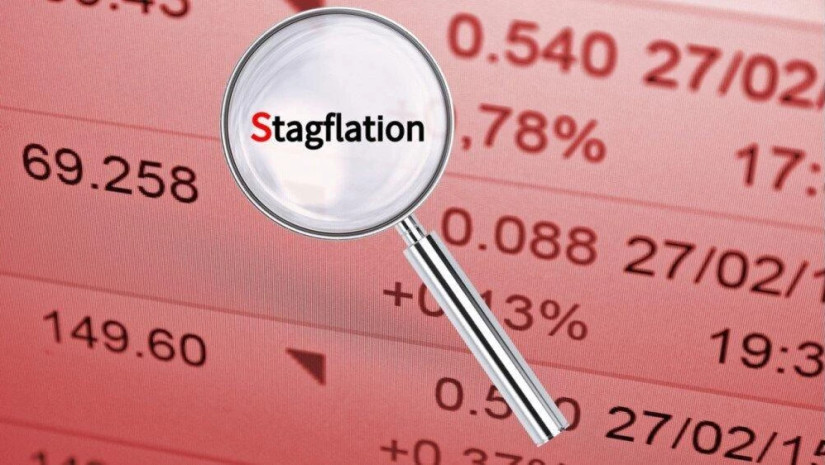Global investors are turning more bullish on oil and OIL equities in a global stagflation scenario. Brent crude, the global benchmark, hit $80 for the first time in three years last week.
With monetary and fiscal policy stretched to the limit and energy costs rising as a share of economic output, higher oil prices could turn into stagflation and create a macro crisis.
Historically, stocks and bonds do poorly in stagflation periods. Precious metals gold & silver perform best followed by commodities (especially oil).
More and more international banks and oil traders increasingly predict that the current oil supply-demand deficit is larger than has been expected and discounted by the market, leading to a move from a cyclical to a structural bull market in oil., with important implications for energy stocks.
China’s central government last week ordered top energy firms to secure supplies at all Costs. Oil at $200 a barrel price target and call option strike price $200 is circulating in the commodity markets again as prominent Wall Street houses strengthen the bullish case for oil.
Stagflation refers to an economy that is experiencing a simultaneous increase in inflation and stagnation of economic output. Stagflation was first recognized during the 1970s when many developed economies experienced rapid inflation and high unemployment because of an oil shock.
China with 8.4% GDP growth this year is the fastest-growing major economy in the world, yet China seems to be entering into at least a short period of ‘stagflation,”
China accounting for 20% of global GDP is a harbinger for global stagflation risk.
With power curbs hitting both commodities producers and major manufacturing hubs, there are worries that China and the broader global economy could be set for a bout of stagflation, where the cost of raw materials and finished goods remain elevated even as demand and economic growth withers.
While stagflation is still not the mainstream or Wall Street sell-side base case scenario.
Six Nobel Prizes have been awarded for work saying stagflation is all too possible.
Equity markets like Russia in the global context could benefit disproportionally well if and when the stagflation narrative goes mainstream. China was over-invested when Russia was under-invested by global investors. According to Bloomberg data, Russian equities have outperformed china equities by +59% so far this year.
Since the COVID-19 outbreak emerged from China, the global oil market has been experiencing a massive demand shock that saw the need for transportation fuels fall dramatically as lockdowns spread across Asia, the U.S., and elsewhere.
The deepening global energy crunch has pushed natural gas in Europe and Asia to the equivalent of about $190 a barrel, something the oil market has never seen.
Energy prices are rising from the U.S. to Europe and Asia as economies recover from the pandemic while supply lags behind. Depleted storages after the past winter, colder and longer than usual, coupled with reduced field investments in some regions and heavy maintenance deferred from 2020 because of Covid restrictions, all contributed to the global crisis.
Financial markets often discount the future and at times the trend is your friend. According to Bloomberg data ENERGY is the best performing sector of the U. S stock market S&P 500 index so far this year.
In a US equity market that is often considered at “peak “ valuation, it is important to note that Energy after financials is the 2nd cheapest stock market sector in terms of current valuations.
Energy has been the most disliked sector for several years but after oil plunged, and actually went negative, in the coronavirus sell-off last year, many investors gave up on the sector.
Over the last 5 years, the Energy Select SPDR ETF XLE is down 27% even as the S&P 500 has rallied 100% and the NASDAQ has soared 175%. The current market dividend yield of the S&P500 stands at 1.38% versus the dividend yield of 4.15% for Energy Select SPDR ETF XLE.
Even though Energy is the best performing S&P 500 sector so far this year, many investors have stayed out of energy & oil stocks. Partially for ESG reasons.
Energy is just 3% of the S&P 500 compared to technology stocks, which are 40% of the index.
Should the stagflation narrative become more mainstream, we could see oil and energy stocks outperform while tech stocks that were priced for perfection could be at risk.
Energy stocks with attractive dividend yields might fare best to protect portfolios from stagflation risk.
Rising inflation expectations which sooner or later will translate into higher interest rates and thus higher discount rates on future cash flows. This could hit duration assets such as long-dated fixed income and high growth and expensive valuation stocks the most.
Brent $200 calls for December 2022, options contracts, sign a growing number of investors, and options traders are betting that an energy crunch this winter may see prices rip higher going into 2022.
The global energy crunch could help propel oil prices above $100 a barrel for the first time since 2014 and spur a global economic crisis due to stagflation. Investors should take note and position their portfolios for the growing likelihood of stagflation.
Rainer Michael Preiss serves as Portfolio Strategist at Golden Equator Wealth Singapore.












